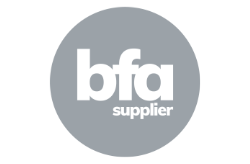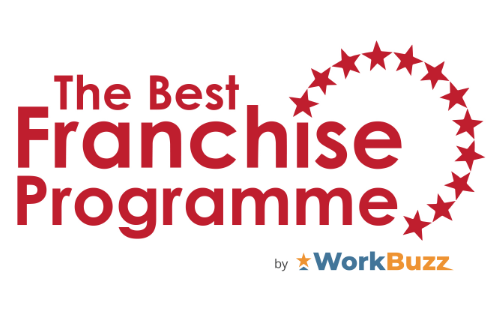For most that get there, building a business to the point of successfully franchising it is a labour of love. That passion is something franchisors can’t have enough of; it’s one of the key drivers and differentiators of a great operation. However, it can also be blinding, particularly during the formative years of growth. Living and breathing your brand can shield you from the truth, from seeing what others see. Because when it comes to finding franchisees, existing solely in the bubble of your business isn’t going to deliver the best results. You’ve got to get beyond how you feel about your franchise and look through the eyes of others to assess your appeal to the people who really matter – your prospects.
Attention to detail can be the difference between an enquiry and a missed opportunity. Take some time to get away from the noise and day-to-day operations to get a truly fresh look at your proposition, focusing on three key areas.
First impressions
You see your marketing messages and materials constantly and human nature means you’ll barely notice them after a while. But potential franchisees checking out multiple opportunities are usually looking for reasons to narrow their options and cross brands off their shortlist, so your shop window needs to be at its most appealing. And that window is probably a large one. Your website stands at its centre, surrounded by every other place you advertise: portals, print, social media, digital and other campaigns. Even if your website isn’t where someone found you, any interested prospect will spend serious time looking over it – unless you give them a reason not to.
Fortunately we’re now – mostly – past the days of having a single page with 100 words on franchising tacked on to your main customer site, though this does still happen. Put yourself in a prospect’s shoes: you’re looking at five different brands and one of those five websites offers little more than “we’re franchising, get in touch” in the way of information. Which one do you eliminate first? Most franchise sites require no complex functionality, meaning they are inexpensive to have properly designed and built, so there’s no excuse for not having a professional-looking site that appeals directly to your target audience in its design, copy and calls to action.
Likewise if you have a great website but follow it up with poorly designed and produced emails, prospectus and other materials, then you’re taking the initial sheen away and diminishing interest. Along with your online presence, look anew at your other marketing collateral. Your brochures, fliers, social media and so on should all project the image of a modern, professional and savvy franchisor that knows how to support its franchisees to succeed. Remember that some of this information will also be viewed by people who will influence the prospect’s decision-making process, such as family, friends or professionals, so it needs to impress both visually and in its wording.
Playing the field
As nice as it is when a prospect has blinkers on as to other franchise options, the reality is that those who are doing proper due diligence on the market are grading you against the rest. Some franchises naturally have several competitors; if you’re in home care or pet care for example, it’s easy to identify rival opportunities. But if you think you have no competitors and a unique business, you’re missing the point: when it comes to franchising, you’re competing for prospects and their capital. If your franchisees operate from vans or shops, then your competition includes other mobile franchises or retailers, whether they offer similar products or something wildly different.
Whether through your own knowledge or by asking prospects who else they’re looking at, competitor research can go a long way toward distinguishing your brand. Once you’ve identified a few, research them comprehensively. Look at their website, marketing collateral, online profiles, print ads and so on. What are the key messages they give out? What are the advantages they focus on? How do they position themselves in the market? Who are their communications speaking to?
By properly understanding the competition, you can assess your strengths and weaknesses in relation to your rivals and get a big-picture overview of the market as prospects are seeing it. You’ll gain an understanding of what you look like in that context, rather than just what you look like in your own mind. And, of course, if you objectively know your differentiators and espouse them early, you’ll ensure you stand out from the crowd.
Recruitment process
The impression you’ve conveyed so far is either enhanced or undone by what happens when the human-to-human interaction begins. It goes without saying that a courteous, punctual and knowledgeable point of contact is expected, someone to provide answers and information rather than simply sell during the early telephone conversations. And then it’s back to those first impressions for the all-important meeting or discovery day at your office.
What’s the first thing someone will see when they walk into your office for the first time? Is it clean and tidy? Are the people they’ll talk to passionate and well-informed? It’s incredibly easy to overlook these things in a building and situation you’re in daily but for fresh eyes visiting for the first time it will set the tone for the rest of their experience.
In aligning these three key areas with care, professionalism and consistency, prospects should be able to replicate your hunger for your business for themselves – and perhaps start seeing things through your eyes too.

Paul Stafford
Having been the bfa's PR manager for over four years, Stafford knows a thing or two about the world of franchising. And in his current role as head of communications at Chantry, he helps businesses get to grips with creating killer content and see results from highly targeted online marketing campaigns.

Paul Stafford
Having been the bfa's PR manager for over four years, Stafford knows a thing or two about the world of franchising. And in his current role as head of communications at Chantry, he helps businesses get to grips with creating killer content and see results from highly targeted online marketing campaigns.
































